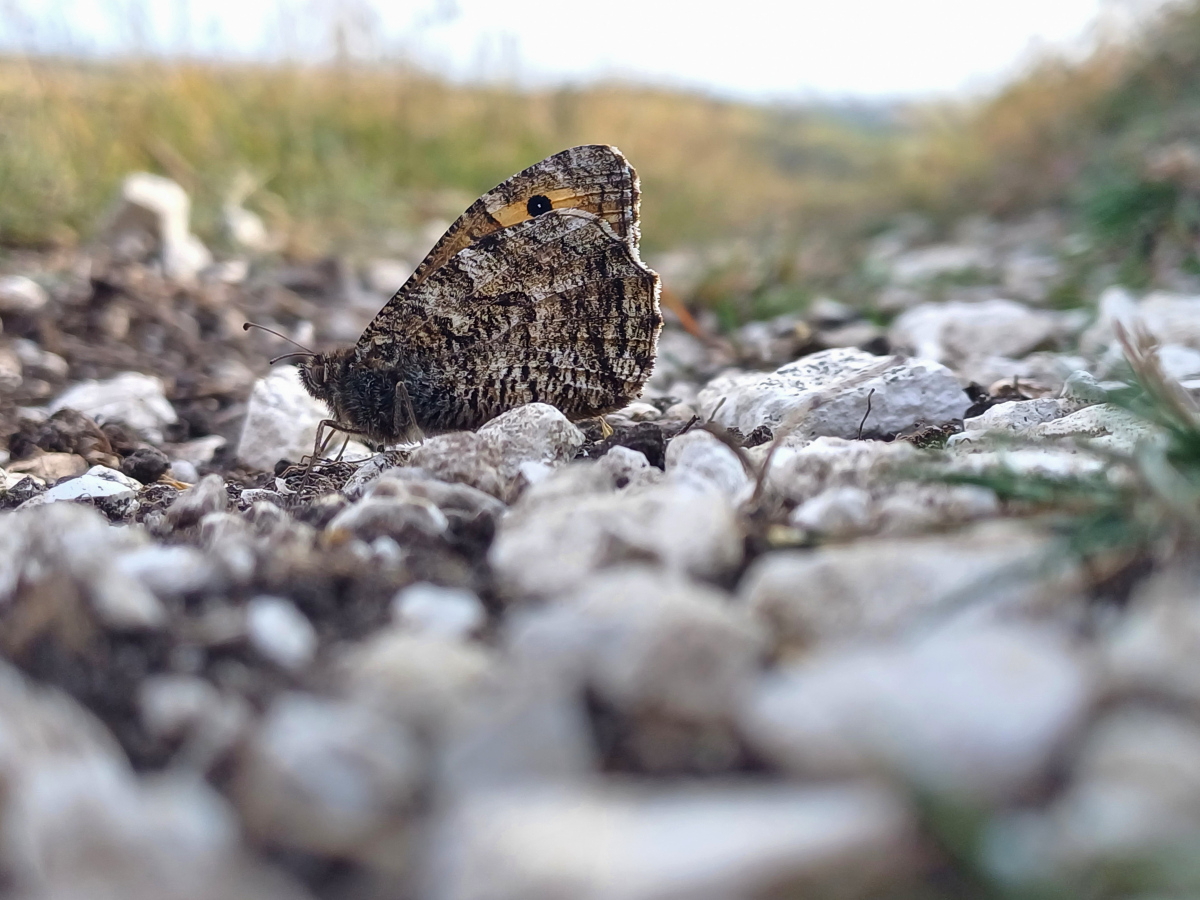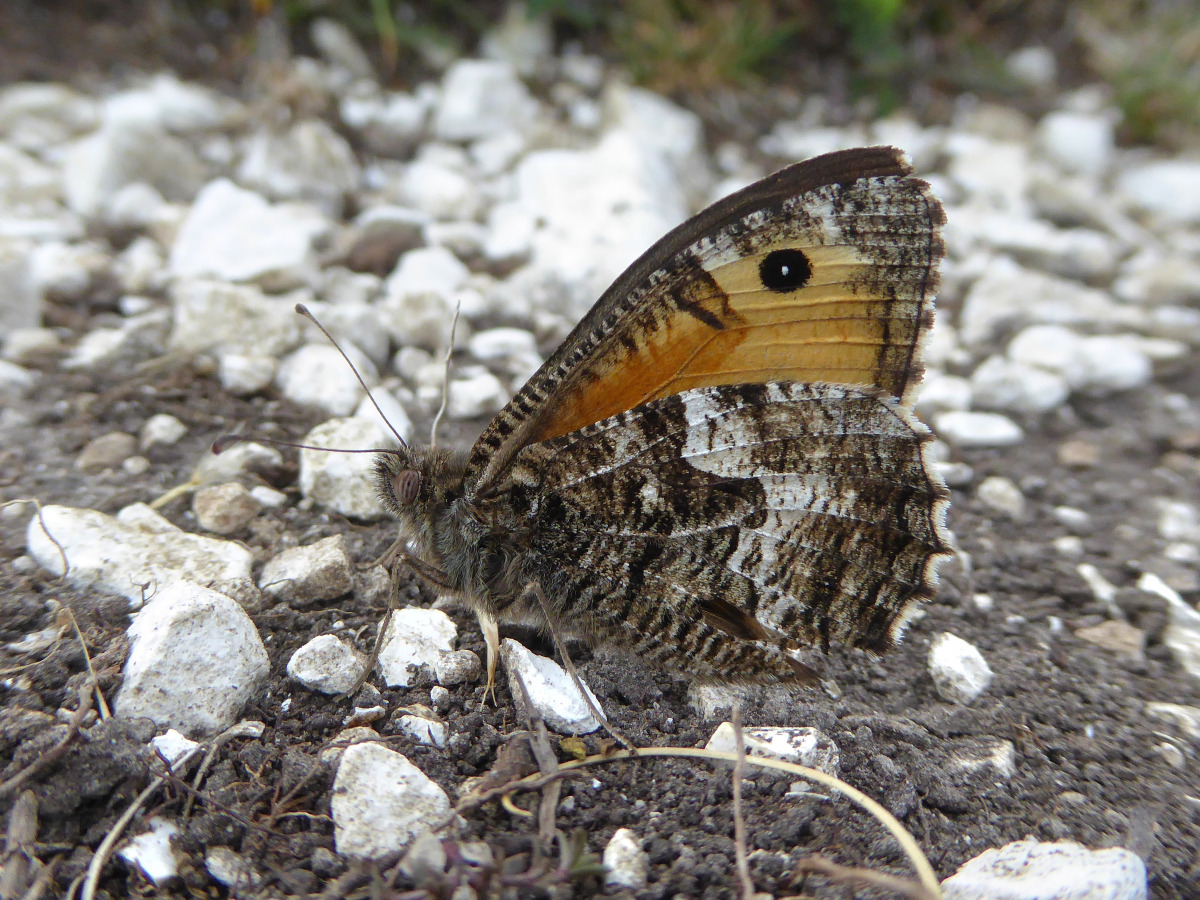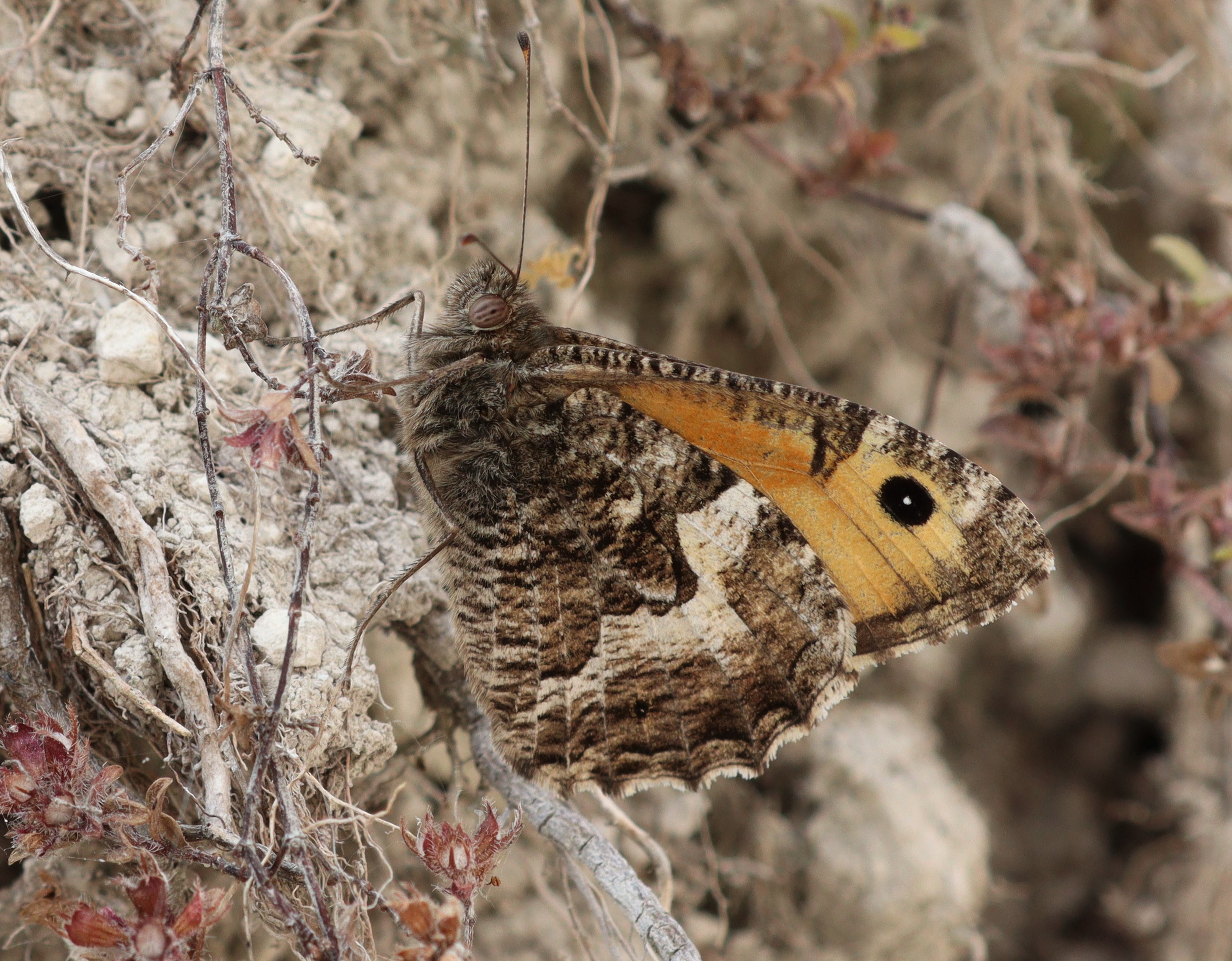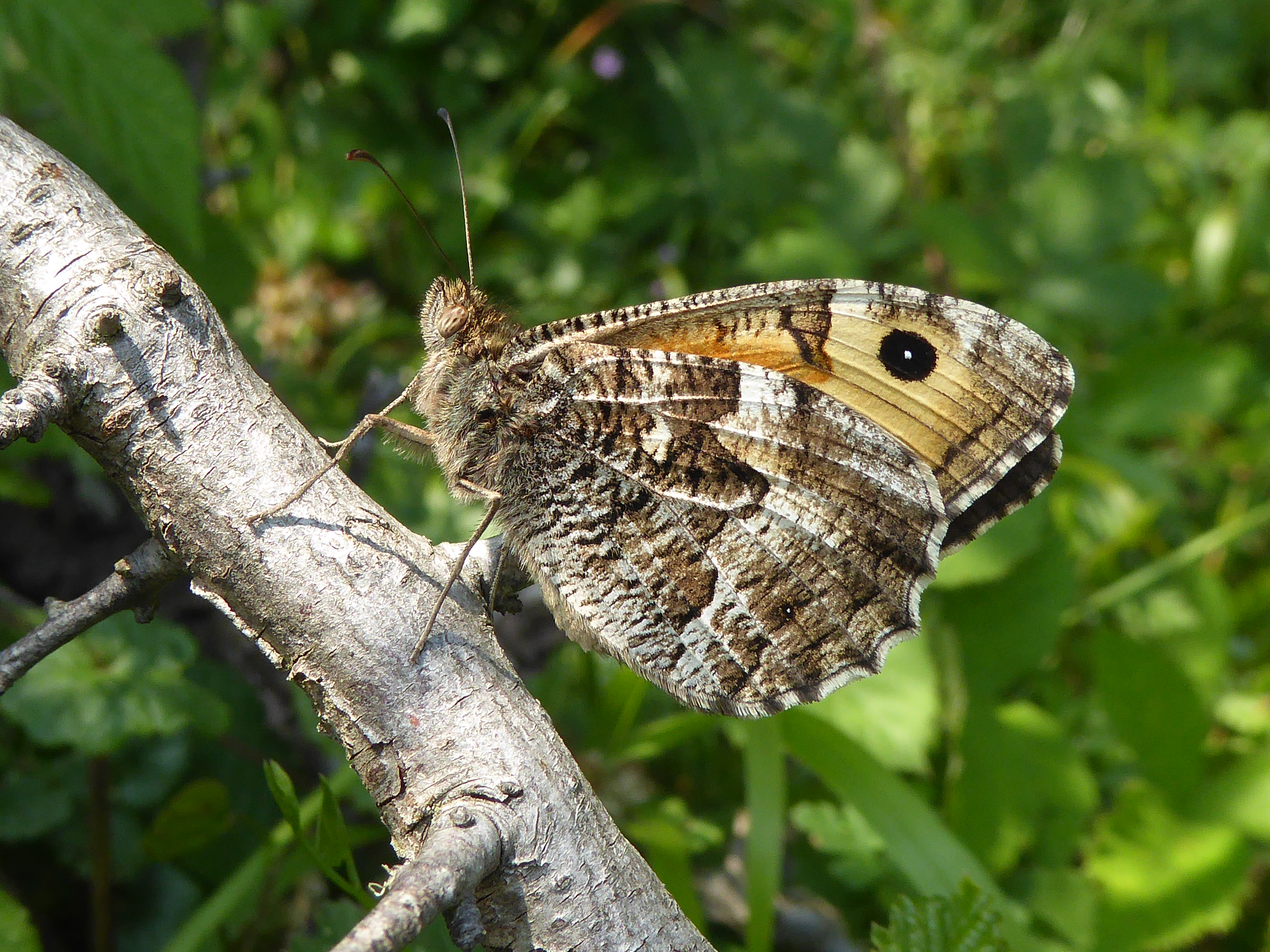
Hipparchia semele
In Sussex there have always been two distinct races of Grayling, one associated with chalk grassland and the other with acid heathland. All the heathland populations disappeared many decades ago, with no records in East Sussex since 1973 and none in West Sussex since the mid-1980s. The project “Heathlands Reunited” aims to restore and re-connect heathland habitat between Woolmer Forest in Hampshire and Pulborough in West Sussex, and over the next decade or so, it is conceivable that re-colonisation of this species may occur from neighbouring Hampshire and Surrey.
The chalk grassland populations have also plummeted over the past 30-40 years. In the 1990-1994 county survey Grayling was found in 15 tetrads, but in the 2010-2014 survey, this figure had decreased to just four tetrads: three in the Wilmington area and one in the far north-west of the county at Weavers Down, near Rake. In 2016, it was found in just a single tetrad at Windover Hill, Wilmington and nowhere else. As I write this update in 2024 the situation has changed considerably, and the outlook is immeasurably better. In the past few years Windover Hill has been well-managed and once more the Grayling population is flourishing, and even threatening to spill out into neighbouring areas.
The only reliable site to see Grayling is Deep Dean, Windover Hill at TQ544031. This species can also be located around the Ewe Dene reservoir at TQ537034 in some years, and in 2023, one was seen egg-laying in the High and Over area, nr Seaford.

Grayling on chalk terrain at Deep Dean – photo by Patrick Moore

Territorial male at Deep Dean – photo by Patrick Moore

Grayling at Ewe Dene – photo by Dave Brown

Grayling at Ewe Dene – photo by Dave Brown

Grayling at Deep Dean – photo by Peter Farrant

Sussex BC website photo
Butterfly Conservation Grayling